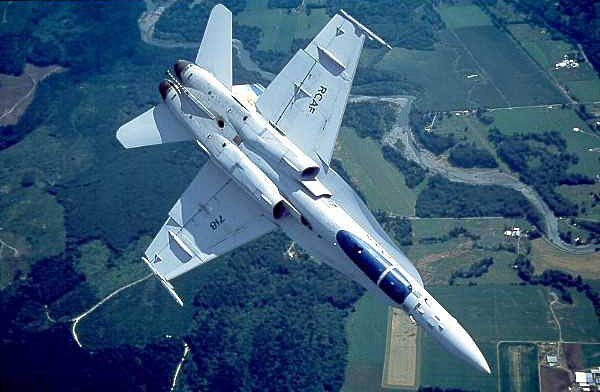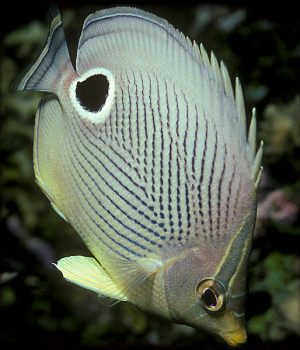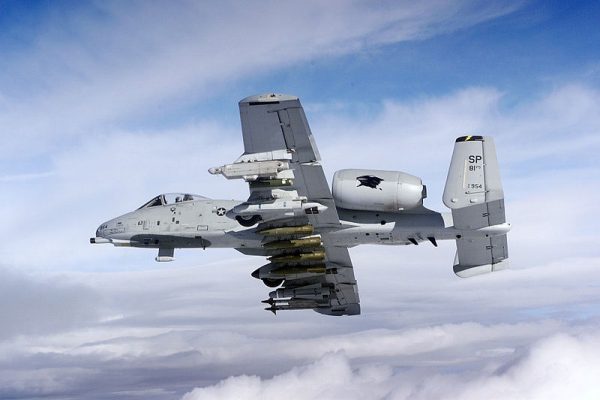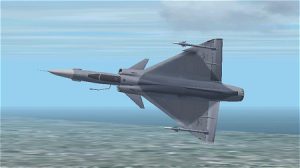In the heat of aerial battle, simple visual cues can throw off pilots and make dramatic split-second differences. Any camouflage helps, but fighters need to be sleek and maneuverable so design solutions likewise have to be physically unobtrusive.

Working within this limitation, one particularly clever strategy for throwing off enemy planes involves painting a false canopy on the underside of an aircraft. Essentially: the transparent cockpit enclosure on the top of a plane is visually mimicked on its underside — a confused enemy pilot might thus mistake the bottom of a craft for its top in the heat of combat. Like many camouflaging strategies, this design approach borrows from precedents found in nature.

It is a type of automimicry found, for instance, in fish and other animals. Unlike conventional camouflage, however, that blends with surrounding environments, automimicry involves self-imitation. In the case of creatures, similar markings on the head and tail can confuse a potential predator about the speed and direction of their target — like a fish with a pair of fake eyes toward its rear.
Likewise with aircraft, a fake canopy painted on the bottom can create confusion around the craft’s attitude and potential maneuvers.

This specific form of camouflage was patented in 1980 by Keith Harris, a 50-year veteran of the Air Force Art Program in the United States. The strategy has since come to be used by air forces in Canada, South Africa and other countries around the world, sometimes in combination with countershading strategies.

Employing an extension of the same idea, some fighters also feature a diamond painted on their backs. As with the famously counter-intuitive dazzle camouflage approach, the goal here is not complete disguise but momentary confusion — these diamonds can make it difficult to ascertain the shape, orientation and direction of a craft. This strategy is sometimes coupled with the false canopy to create maximum disorientation.
False canopies and similarly deceptive paint jobs are also not limited to aerial combat applications. While building their Kamov Ka-50 (“Black Shark”) attack and scout helicopter, the Russian military painted false cockpits on the vehicle to throw off spy satellites. The ruse apparently worked, evidenced by the fact that Western sources speculated wildly (and wrongly) about how the finished vehicle would be used. Designers attempting to reverse-engineer the aircraft were also at a loss.



Comments (1)
Share
Great article! I would love to read more info on the Kamov’s fake cockpits.
It’s a minor gripe, but it seems like the Cheetah C picture is not a photo but an actual flight sim screenshot.
I found it on this page where they mention it’s from mirage4fs.com which is a flight sim.
http://www.saairforce.co.za/forum/viewtopic.php?f=2&t=249